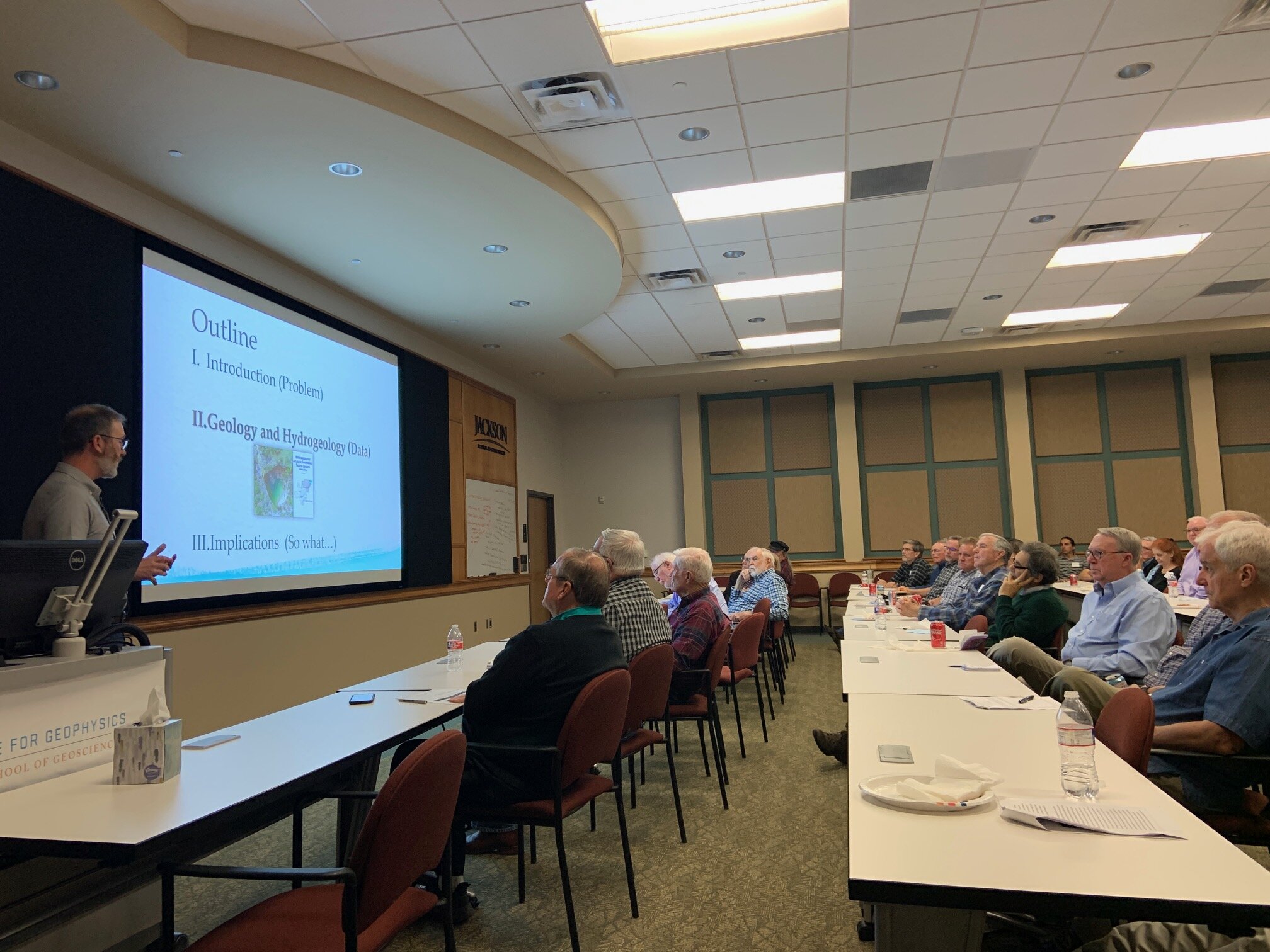AGS meeting (Dec 7): Aquifer Storage and Recovery and Managed Aquifer Recharge throughout Texas: Planning for the Future
Aquifer Storage and Recovery and Managed Aquifer Recharge throughout Texas: Planning for the Future
Dr. James A. Golab, Hydrologist – Texas Water Development Board
Key Points
Aquifer storage and recovery (ASR) is the process of storing water within aquifer strata for later recovery using an injection well. This water may be recovered from the same well the water was injected from or another location, depending on the project and local geology. Managed aquifer recharge (AR) is the intentional recharge of an aquifer by means of infiltration or injection. These methods have the benefit of reserving water during wet periods by preventing runoff and evaporation. In the 2017 State Water Plan, ASR and AR projects are estimated to comprise 1.8 percent of the new water supplies produced in Texas by 2070. In 2019, the 86th Texas Legislature passed House Bill 721 that directed the Texas Water Development Board (TWDB) to conduct studies to identify the relative suitability of aquifers for use in ASR and AR projects. This talk will present an overview of the current ASR and AR projects occurring across the state.
Dr. James A. Golab
Bio
James joined the Innovative Water Technologies Department at the Texas Water Development Board in 2019 and focuses on aquifer storage and recovery projects. James earned a Ph.D. in Geology from the University of Kansas, an M.S. in Geology from the Colorado School of Mines, and a B.S. in Geology from Mercyhurst University. James’ previous experience includes carbonate sedimentology and paleontology, recently completing his doctoral research on the Edwards and Trinity groups. James also has experience working in water utilities as a licensed treatment and production operator.














